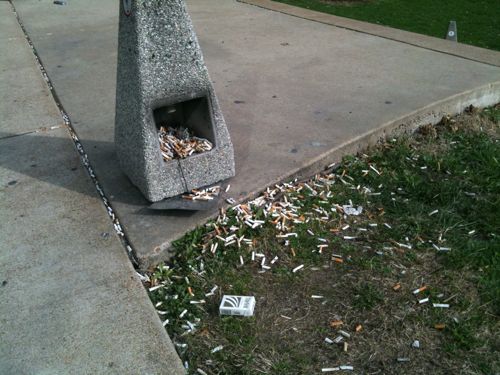St. Charles County Needs Public Transit
 St. Charles County now has more people than the City of St. Louis (360,484 vs 319,294). Â That population is spread out over a much larger area giving the county a low population density of 643/sq mi compared to St. Louis City which has a density of 5,158/sq mi. Â St. Louis County’s population density is 1,966/sq mi. Â One might conclude from these numbers that St. Charles County lacks the density to support transit.
St. Charles County now has more people than the City of St. Louis (360,484 vs 319,294). Â That population is spread out over a much larger area giving the county a low population density of 643/sq mi compared to St. Louis City which has a density of 5,158/sq mi. Â St. Louis County’s population density is 1,966/sq mi. Â One might conclude from these numbers that St. Charles County lacks the density to support transit.
In Illinois, St. Clair County contracts with Metro for transit service despite having a population density of only 393/sq mi (270,056). In addition to bus service, they funded and built an extension to the MetroLink light rail line. Â In neighboring Madison County, the population density is a mere 366/sq mi yet they have the separate Madison County Transit (MTC MCT) system.
Again, St. Charles County has no county-wide transit service. Â The City of St. Charles operates the horribly named SCAT (St. Charles Area Transit)Â system but that is little more than a senior shuttle service.
The St. Charles Area Transit system, otherwise known as SCAT, consists of five bus routes that provide transportation to various locations within the City of St. Charles as well as to the Metrolink North Hanley Station. Curb-to-curb service is provided for all riders, and all busses are equipped with wheelchair lifts.
All routes run Monday through Friday. Please allow 5-10 minutes leeway for each time listed. The routes and schedules are subject to change.
I have a copy of the fold out paper map showing the routes, none are online (wtf?). Yes, seniors need such systems but what about others? What about the other 294,691 St. Charles County residents that don’t live in the City of St. Charles?
In terms of its growth spurt, St. Charles may still be in its tweens.
“We’re probably kind of in the middle,” Anthony [director of community development with St. Charles County]Â says. The county estimates that its maximum capacity is about 640,000 people, he says, considerably more than the county’s current population of 360,484.)
With much more growth ahead, the county and cities within it have several things to consider moving forward, chiefly the very things that brought people out in the first place. (STL Beacon)
More growth with no plan to get folks from home in Wenzville to work in O’Fallon? Â Part of me would like to just sit back and wait for the realities of an aging population combined with rising fuel prices to sink in to the average St. Charles County resident. But by the time that happens they will be in crisis mode. As part of our 16 county region we can’t allow such a large area fall into transportation crisis.
I’m not the first to realize St. Charles County needs a system. They created the St. Charles County Transit Authority and East-West Gateway studied the idea in 2006-07, an update to a 2001 plan.
East-West Gateway suggested that a sales-tax of 1/8 cent (or less) could support the proposed system which would, in turn, provide the local workforce with a transit option that is financially and environmentally friendly.
Polling commissioned by the Transit Authority in January 2008 and paid for by private donations did not indicate sufficient support for a sales tax for public transit. Voters opposed a bus sales tax for two main reasons:
- taxes are already “too high†or
- this particular tax would be an “unwise†use of taxes.
In addition, a large group (20%) stated they would not use the bus system or would not access it because its proposed routing is not convenient for them. (source)
Leaders in St. Charles County need to work on passing a transit tax so the Transit Authority can begin the work of setting up a transit system.
– Steve Patterson





